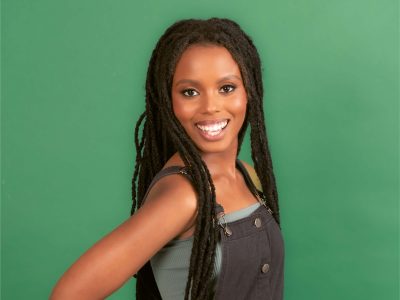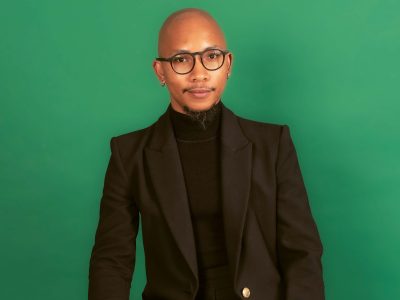We shine the light on three young talented Joburg artists
Living. Dead. From the African continent or one of the Old Masters. Chances are you can name more than a handful of artists, right? But can you say the same for curators? The answer is more than likely ‘no’ – and that’s not surprising. After all, curating is behind-the-scenes work.
And that’s why it doesn’t get the credit it deserves – although curators are some of the most important figures in the art world, not only keeping an eye to global developments that shape the art world, but in turn reflecting those trends through conversations with artists and their audiences. Think about the impact that has on the way those audiences see the world, and it’s clear that their role isn’t just about putting together a coherent exhibition.
That’s why Latitudes joined forces with RMB to launch the RMB Latitudes CuratorLab, a programme which aims to offer curators from across the Africa the opportunity to hone their conceptual curatorial skills. In so doing, they’ll deepen curatorial practice throughout the continent, while providing an opportunity to flex that freshly developed curatorial muscle when they plan their own exhibitions, to be viewed at Latitudes Online (latitudes.online).
Ten curators were selected in this year’s iteration of the programme, representing Botswana, Ghana, Nigeria, Namibia, Zambia, Mozambique and South Africa – and we’re proud to say that the three South African curators all hail from Johannesburg.

Art as interrogation
For Kamogelo Sebopa, a Fine Art Honours candidate at Wits, art is a way to interrogate the world.
Perhaps that’s why she’s been experimenting with art since she was at school – her love of the visual is a way of trying on different lenses that allow her to see what’s around her in new ways. After a job shadowing stint at the Everard Read Gallery opened her eyes to the possibilities art offered – from making her own marks to becoming a gallery owner – Kamogelo fell even more in love with art.
Kamogelo’s interest is currently focused on the performative aspect of print-making, and the therapeutic qualities of rhythm, repetition and pattern. So, how does curation fit into this? “I think it informs my artistic practice in terms of research. I enjoy looking at artists who explore certain themes,” she says.
Having only recently embarked on her curatorial journey, she’s already racked up some impressive credits, taking part in exhibitions for the Wits Art Gallery and FNB Art Joburg. And what’s she seen of the industry thrills her. “It’s an exciting time for upcoming artists. I’ve noticed that it’s becoming easier for them to navigate the art world and gain exposure, especially compared to the early 2000s, when it was very exclusive. It’s wonderful to see my age mates gaining that global recognition and having more freedom. I think we have the Internet to thank for dismantling the old ways of doing things.”

Art as a statement
Multimedia artist and designer Raelee Seymour-Brown says that studying art history and visual culture as part of her journalism degree at Rhodes University made “the world expand right before my eyes…I decided I never wanted to stop learning about this”. Curation builds on the delight this world presented, because it is the perfect blend of all her favorite things: “writing, art, history, research, thinking and creating all in one!”
Her style, she says, is hugely maximalist- an aesthetic that permeates into every area of her life, from her home to the way she dresses, her multimedia design work and the way she thinks. “Of course, that heavily informs my curation practice,” she says. Her interest in pop culture is another significant influence, because pop culture is the lens through which she views the world. “I like to use dark humour and playfulness to critique or celebrate the contradictions that arise out of the often obsessive, hyper-consumerist ideals that pop culture reflects back to us. That’s what I love about it: it’s always been considered low art, but I believe it acts as one of the clearest mirrors of the contemporary values of modern society and culture – what we find important, and most critically, why we seem to find these things important.”

Art as legacy
Art has been a part of Tlotlo Lebelo’s life as far back as he can remember, from childhood afternoons spent at his community arts centre to his studies in visual arts at school. He shifted his interest to glass blowing while working towards his degree in fine and applied arts, and then again when he moved into his current role as a manager of art collections – a position which sees him taking care of historical and contemporary artefacts.
As a ‘cultural worker, Tlotlo’s interest now falls on preserving those artefacts. “We need to be aware that the past has a way of returning, and we can’t move forward without acknowledging that past,” he says.
He embraces the evolution the art world is currently undergoing, especially since Pan African art is garnering more attention – attention which is long overdue. “Africa is rich in subject matter, and it’s great to see many auction houses accepting consignments from our continent as more overseas collectors show interest in our stories. As curators, we have a role to play in articulating that narrative – it’s a language that’s growing.”
Tlotlo is especially excited to be able to nurture his skills and develop his network through his relationship with Latitudes. He plans to help move the spotlight onto living artists, so that they, too can be studied and their stories documented for posterity.
Text: LISA WITEPSKI • Photographer: Nicole Moore. Details: nicolemoorephotography.co.za • Make-up for Kamogelo Sebopa: Makeup by Ryno, 071-688-0242.






